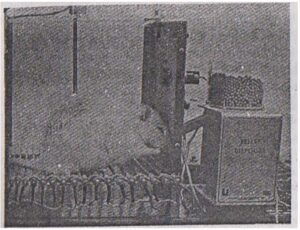This type of conditioning was first investigated by B.F. Skinner did it. Skinner studied the phenomenon of voluntary responses when an organism acts on its environment. He called the operators. Operants are those behaviors or responses that are voluntarily emitted by animals and humans and are under their control. The term operator is used because the organism acts on the environment; Conditioning of operant behavior is called operant conditioning.
Skinner experimented with white rats. He kept the rats inside the cage without giving any food for some time. The rat was hungry and was searching for food.

While running here and there inside the cage, the rat hit a lever. On leveraging, the rat was given food. Food was given as reinforcement for random lever presses. Gradually the rat learned to hit the lever when hungry. Now in this process the elicited response i.e. accidentally hitting the lever gets reinforced by food and hitting the lever becomes a normal behavior i.e. whenever food is required the rat hits the lever and gets the food. Is. The rat acts casually on the environment and by regaining the reinforcement for what was initially an accidental operation, this accidental operation becomes a normal operation.
Operant conditioning is also known as instrumental conditioning as the reinforcement becomes instrument for the casual behavior becoming usual behavior. Usual behavior is the learned behavior.
Application of operant conditioning in classroom instruction
Reinforcement is effective only when it is something that satisfies the present need of the organism. The rat was hungry; the need for rat was forced and food has acted as an effective reinforcement because it satisfied the need hunger.
Reinforcement is an effective means to modify undesirable behavior of students or to teach them new behavior even in the classroom. The student’s need in classes may not be the satisfaction of hunger, but often the students want some recognition, praise, awards and other such pleasant things. Encouraging students by making pleasant facial expressions like smile or nice words like nice, well said etc. When a student answers a question correctly or when he himself tries to get the correct answer it will act as positive reinforcement and such reinforcement will take place. Motivate the student to come forward to participate in the class willingly and frequently. Such reinforcements should be given immediately after students demonstrate desirable behavior. Only then will students be able to associate the response with reinforcement and learning the desirable behavior will become effective.







